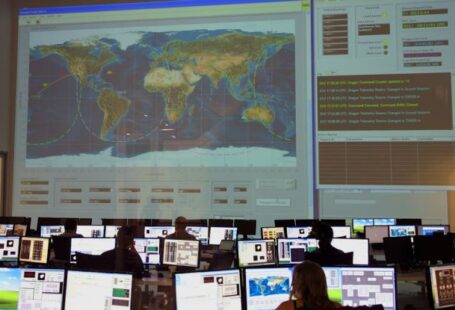Creating digital topographic maps requires a combination of specialized tools and software to accurately capture and represent the Earth’s surface features. Topographic maps are essential for a variety of applications, including urban planning, natural resource management, and environmental monitoring. In this article, we will explore the tools and software commonly used by cartographers and geospatial professionals to create detailed and accurate digital topographic maps.
**Lidar Technology**
Lidar, which stands for Light Detection and Ranging, is a remote sensing technology that uses laser pulses to measure distances to the Earth’s surface. Lidar systems mounted on aircraft or satellites emit laser beams towards the ground, and the reflected light is used to create highly detailed elevation models. Lidar data is crucial for creating accurate topographic maps, as it provides precise information about the terrain’s elevation and surface features. The use of Lidar technology has revolutionized the field of cartography, allowing for the creation of high-resolution digital elevation models that form the foundation of topographic mapping.
**GIS Software**
Geographic Information System (GIS) software is an essential tool for creating and analyzing digital topographic maps. GIS software allows cartographers to import, visualize, and manipulate spatial data, including elevation models, satellite imagery, and vector data. Popular GIS software programs, such as ArcGIS, QGIS, and MapInfo, provide a wide range of tools for geospatial analysis, map design, and data visualization. Cartographers use GIS software to overlay different layers of information, such as elevation contours, land cover types, and infrastructure networks, to create comprehensive topographic maps that convey detailed spatial information.
**Digital Elevation Models (DEMs)**
Digital Elevation Models (DEMs) are digital representations of the Earth’s terrain, created using elevation data collected from various sources, such as Lidar, photogrammetry, and satellite radar. DEMs provide a three-dimensional representation of the Earth’s surface, allowing cartographers to visualize and analyze terrain features accurately. High-resolution DEMs are essential for creating topographic maps with detailed elevation contours, slope gradients, and hillshades. Cartographers use specialized software, such as Global Mapper and ENVI, to process and analyze DEM data and generate accurate topographic maps.
**Satellite Imagery**
Satellite imagery plays a crucial role in creating digital topographic maps by providing high-resolution visual data of the Earth’s surface. Satellite sensors capture images of the Earth from space, allowing cartographers to observe and map terrain features, land cover types, and changes over time. Satellite imagery is often used in conjunction with Lidar data and DEMs to create detailed topographic maps with accurate representation of surface features. Cartographers use satellite imagery from platforms such as Landsat, Sentinel, and Planet to supplement elevation data and enhance the visual quality of topographic maps.
**Cartographic Design Software**
Cartographic design software, such as Adobe Illustrator and CorelDRAW, is used to create visually appealing and informative topographic maps. Cartographers use design software to layout map elements, such as scale bars, legends, and labels, and customize the map’s color scheme, fonts, and symbols. Design software allows cartographers to fine-tune the aesthetics of topographic maps and ensure that they are clear, easy to read, and visually appealing. By combining GIS data with cartographic design software, cartographers can create topographic maps that effectively communicate spatial information to a wide audience.
**Conclusion**
In conclusion, the creation of digital topographic maps involves a combination of specialized tools and software that enable cartographers to capture, analyze, and visualize spatial data with precision and accuracy. From Lidar technology and GIS software to DEMs, satellite imagery, and cartographic design software, each tool plays a crucial role in the map-making process. By leveraging these tools and software, cartographers can create detailed and informative topographic maps that support a wide range of applications, from urban planning to environmental monitoring. The advancement of technology continues to enhance the capabilities of cartographers in creating digital topographic maps that are essential for understanding and managing the Earth’s surface features.





